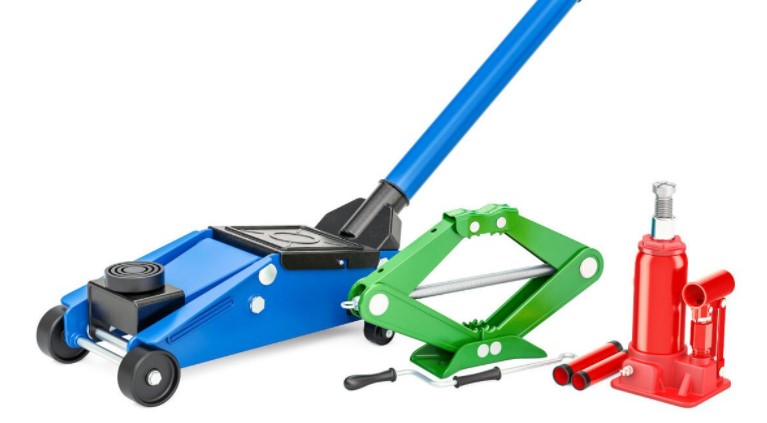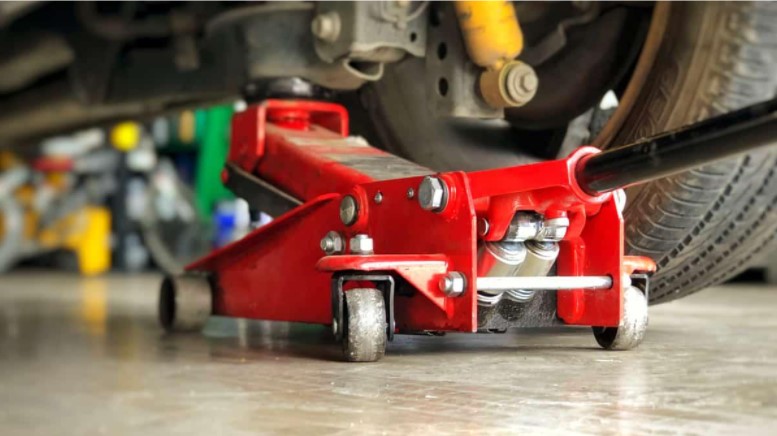
Choosing a car jack or lift can be an arduous task for a lot of homeowners planning some Do-It-Yourself vehicle maintenance at home. There are a lot of different factors people need to consider – compatibility, portability, size, safety, to name a few.
This task can be pretty daunting for first-time buyers, and that is why this article exists. Consider this article as your simple guide on different personal car lifts. Here we will get an explanation of every type of vehicle jacks and take a closer look at its pros and cons.
Commercial-grade two-post lift
This device is the most popular jack in commercial use, and the reason for this is that it has tons of benefits.
Advantages
Professionals use this device for a reason – they are an excellent tool.
Good usability
A modern two-post jack can pick up almost any vehicle and provide reasonable access to the car’s underbody. They work well with all kinds of modern automobiles and can usually lift older models too (only sometimes that can be a problem if the device points are too far inboard).
To find out more about common car parts, click here for more info.
Excellent reliability
This device is meant to work multiple times per day. For home users, the odds are good that an excellent commercial jack will last for many years.
Reasonable pricing
Considering how awesome these tools are, the $2,000 to $3,000 cost is pretty reasonable.
Disadvantages
If you are a homeowner looking for a jack to put in your small garage, there are things you need to consider:
These things are tall and wide
People cannot really install a two-post jack in a standard-sized home garage. A lot of them need a ceiling height of at least twelve feet and a space that are also about twelve feet wide. There are narrow two-post jacks that can fit in ten-foot-wide residential garages, but that is usually too wide for a standard home garage.
Concrete slab requirements
This type of tool should be bolted to a four to six inches thick slab of concrete that can withstand at least 3,000 pounds per square inch of pressure. If it is not bolted in these concretes, it could face serious safety issues. For residential garages, it means a new concrete slab needs to be installed.

Maintenance
It is not a significant deal, but anyone using or owning this kind of tool need to conduct regular maintenance and inspections. Rollers and wire ropes will need to be checked and replaced every couple of years if needed. But since this tool is a commercial grade, it is easy to say that finding replacement parts is not hard to do. If the garage can accommodate a commercial two-post lift, experts believe that they are great.
Commercial-grade four-post lift
Much like its two-post counterpart, this device is great if people have a residential garage that can accommodate its size.
Advantages
Listed below are some of its advantages.
Good for storage
These things are usually used to create a space in home garages by lifting automobiles up into unused areas near the structure’s ceiling. People can even store another automobile by stacking it under the other car.
Good for serious work
This tool offers complete access to the car’s underside.
Good for low-ground clearances
If the homeowner is lifting an automobile with little ground clearance, a four-post jack is usually the only way to go.
Stability and safety
Lifting an automobile by its tires is considered one of the safest ways to lift it in the air. Supporting the car’s weight at four corners is very safe.
Weight capacity
Because of its design, as well as it has four-corner support, these devices can usually hold more weight compared to other kinds of jacks.
Disadvantages
If a person is a commercial user, the disadvantage of using this tool is that it is not a two-post jack. If you are a property owner, the disadvantages are as follows:
These things are tall
It is hard to install this kind of device in a standard home garage, as they need at least twelve feet of the ceiling, depending on the height of the automobile being lifted. For instance, it would be possible to stack two cars in a ten-foot garage, but property owners would not have any space to work on both vehicles.
It is too wide
Even though a standard four-post jack is not as wide as its two-post counterpart, it is still too wide for standard home garage spaces. Most of these things need at least ten feet of width space.
It is pretty expensive
These devices tend to be more costly compared to the jack mentioned above because of additional materials.
It makes tire and wheel work more challenging
Unlike its counterpart, this tool lift holds the car up by its wheels. Removing wheels need additional steps when using this device. Like the previous model, experts believe that the lifting capability of this thing is one-of-a-kind if users can fit it into their garages.
Visit https://www.familyhandyman.com/list/essentials-you-should-have-in-your-garage-by-age-30 to find out more about how to set up your home garage.
Entry-level hydraulic jacks (scissor-style)
This tool usually raises a vehicle between the wheels. It can either be one boost or two separate raises. It uses a scissor-type-boosting mechanism.
Advantages
These devices have a couple of advantages
Excellent for light repairs and maintenance
If the home user is looking for a booster that is excellent for rotating tires easily and quickly, getting the vehicle up to do a quick filter and lube oil, or replacing brake pads, this device is great for these kinds of jobs.
Excellent for garages with a limited ceiling height
If you have a standard residential garage, there is a good chance that you cannot install a two or four-post jack because of the height requirement of these devices. Scissor-types will solve this problem.
Good for showing off
If you want to be the coolest kid in town, roll the scissor-style jack under your automobile, position it between the wheels, and simply push the button. As long as the boost works properly, you will have an excellent showpiece.
Disadvantages
Like most car jacks and lifts, there are disadvantages to entry-level hydraulic boosts. But these things have more disadvantages compared to other options available in the market today.
They use inexpensive or cheap hydraulic systems
A lot of these boosts cut costs on their hydraulic systems. It makes a lot of sense since hydraulics are the most expensive parts of hydraulic boosts. The problem is a cheap hydraulic system can easily break down with constant use – not to mention the fittings can leak too.
Minimal boost height
Because entry-level hydraulic boosts are designed to raise cars by their frames – and because they usually do not boost more than eighteen inches – they do not offer a lot of access underneath. People use creepers under the vehicle with this type of jacks and lifts, and they will not have enough room to drop a transmission. Of course, individuals can always use blocks on top of the booster, but they can get wobbly and have considered safety risks.
